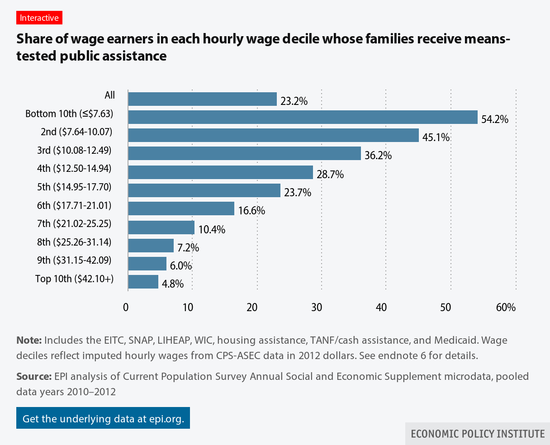
Hey, surprise. When companies like Walmart and McDonald’s pay low wages, their workers have to go on public assistance. And that means that low wages lead to higher public assistance use. In fact, raising the minimum wage to $10.10 would save the government $7.6 billion a year, because working people would be paid enough to live on:
- About half of all workers in the bottom 20 percent of wage earners (roughly anyone earning less than $10.10) receive public assistance in the form of Medicaid and the six primary means-tested income-support programs, either directly or through a family member. […]
- Workers in the bottom 20 percent of wage earners receive over $45 billion in government assistance each year from the six primary means-tested income-support programs.
- Roughly half of all public assistance dollars from means-tested income-support programs that go to working individuals go to workers with wages below $10.10.
- If the minimum wage were raised to $10.10, more than 1.7 million American workers would no longer rely on public assistance programs.
- Raising the minimum wage to $10.10 would reduce government expenditures on current income-support programs by $7.6 billion per year—and possibly more, given the conservative nature of this estimate. This would allow these funds to be repurposed into either new programs or expansions of existing programs to further leverage the poverty-fighting impact of this spending.
- Safety net programs would save 24 cents for every additional dollar in wages paid to workers affected by a minimum-wage increase to $10.10.
Continue reading below the fold for more of the week’s labor and education news.